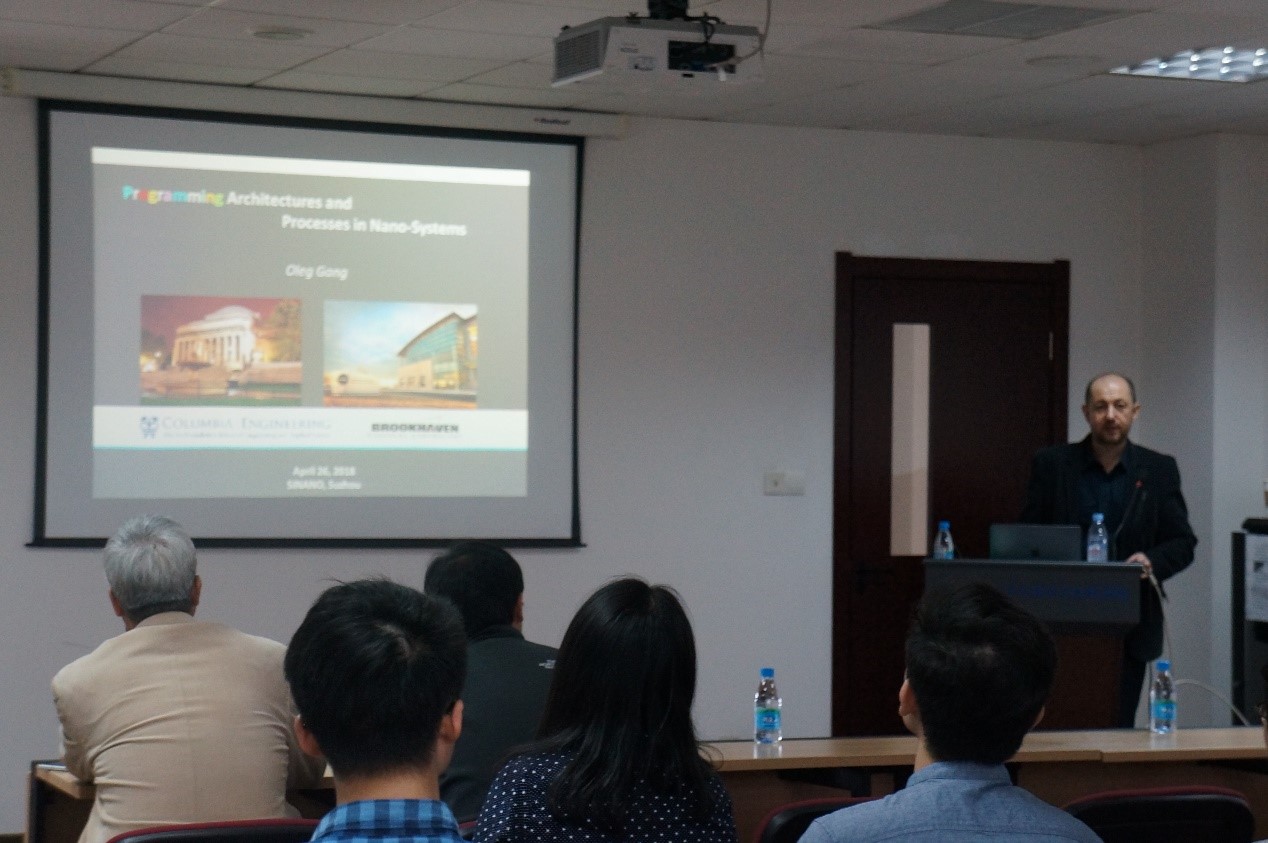On Apr. 26th, 2018, invited by Prof. WANG Qiangbin, Prof. Oleg Gang from Columbia University visited SINANO and gave an exciting scientific report with the title of “Programmable Nano-Systems: form Designed Architectures to Controllable Processes”.
In this talk, he presented novel concepts for creating targeted static and dynamic nanoarchitectures by bridging DNA-encoded nano-objects with structural plasticity and programmability of DNA macromolecular structures. The ability to organize nano-components into the desired organizations is often a limiting factor in creating functional material systems. He introduced some efforts focused in establishing a broadly applicable platform based on DNA to address this challenge. DNA provides powerful means for interaction encoding, and much progress was achieved recently by the field in ability to tailor DNA structures. However, it is challenging to prescribe the architecture or behavior of the entire nanoscale system, as well as translate the advanced in DNA constructs into material design.
Then, a brief strategy presented by Prof. Gang is that “Directional interactions, Programmable colored bonds for objects and bonds, Modularity for complex architectures, Reversible and switchable bonds, Length tenability”. Through establishing assembly approaches and revealing the physical phenomena that govern systems with DNA-encoded interactions, he introduced methods for creation of well-defined three-dimensional lattices, two-dimensional membranes and finite-sized clusters from the multiple types of the nano-components.
Also, Prof. Gang showed recent progress strategies for organizing such nano-components as nanoparticles and proteins into ordered 3D arrays with engineered crystallographic symmetries, and clusters with prescribed architectures, as probed by x-ray scattering, electron microscopy and tomographic methods. These assembly approaches are also used to control a system dynamic behavior: structural transformations, specific triggering of desired configurations and molecular amplification. The applications of the DNA-based assembly platform for creation of nanomaterials with optical, mechanical, chemical and biomedical functions will be also discussed.
Oleg Gang is a Professor of Chemical Engineering and of Applied Physics and Materials Science. He earned his MS and Ph.D. (2000) from Bar-Ilan University, Israel, specializing in atomic spectroscopy and soft matter, respectively. As a postdoctoral fellow at Harvard University (School of Engineering and Applied Sciences), he studied nanoscale liquid phenomena. Dr. Gang started at Brookhaven National Laboratory in 2002, rising through the ranks to lead the Soft and Bio-Nanomaterials group at the Center for Functional Nanomaterials from 2008. As of 2016, Dr. Gang has joined as a Full Professor the Department of Chemical Engineering and the Department of Applied Physics and Applied Mathematics of Columbia University. Dr. Gang has received the University President Award and Wolf Foundation scholarship for his PhD work, Distinguished Rothschild (2000) and Goldhaber (2002) fellowships, Department of Energy Outstanding Mentor Award (2009), Gordon Battelle Prize for Scientific Discovery (2010) among others. Dr. Gang has been named Battelle Inventor of the Year (2016) and is a Fellow of the American Physical Society.

(Information Source: SINANO)

